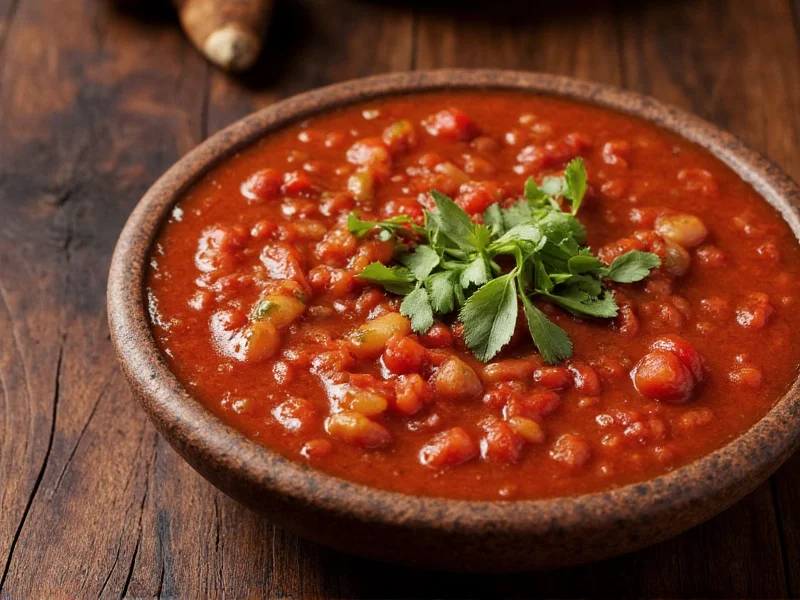When standing before the salsa aisle or reviewing a restaurant menu, understanding the heat difference between mild and medium varieties prevents unpleasant surprises. The distinction isn't arbitrary—salsa heat levels follow standardized industry practices based on pepper selection and preparation methods. Mild salsa uses minimal spicy peppers like poblano or Anaheim, while medium salsa incorporates jalapeños or serranos in higher concentrations.
Decoding Salsa Heat Levels
Salsa heat is measured using the Scoville Scale, which quantifies capsaicin concentration—the compound responsible for spiciness. Commercial producers carefully calibrate their recipes to maintain consistent heat levels across batches. Mild salsa provides subtle warmth without overwhelming flavor, making it ideal for children or spice-sensitive palates. Medium salsa delivers noticeable heat that enhances flavor complexity while remaining approachable for most adults.
Mild Salsa Characteristics
Mild salsa typically contains:
- Minimal spicy peppers (often just 1-2 per recipe)
- Higher proportion of bell peppers or sweet peppers
- Vinegar or citrus for acidity without heat
- Tomato base that tempers spiciness
The heat profile remains gentle, rarely causing mouth burn or nasal reactions. Food scientists formulate mild salsa to deliver authentic flavor without the physiological responses associated with capsaicin. This makes mild salsa versatile for dipping, topping, or incorporating into dishes where heat shouldn't dominate.
Medium Salsa Characteristics
Medium salsa distinguishes itself through:
- Increased quantity of medium-heat peppers (typically jalapeños)
- Occasional inclusion of hotter varieties like serranos
- Seeds and membranes left partially intact
- Balanced acidity that complements rather than masks heat
The heat builds gradually after the initial flavor impression, creating a more complex sensory experience. Medium salsa stimulates endorphin release without causing discomfort for most consumers. Culinary experts note that medium salsa enhances food flavors through the 'capsaicin effect'—where moderate heat increases saliva production and flavor perception.
Direct Comparison: Mild vs Medium Salsa
| Characteristic | Mild Salsa | Medium Salsa |
|---|---|---|
| Scoville Heat Units | 500-2,500 SHU | 2,500-15,000 SHU |
| Primary Peppers | Poblano, Anaheim, Bell | Jalapeño, Serrano |
| Heat Onset | Immediate but gentle | Delayed, building sensation |
| Flavor Balance | Tomato/vegetable forward | Pepper notes more pronounced |
| Common Uses | Children's meals, subtle topping | Everyday dipping, flavor enhancement |
Factors Influencing Salsa Heat Perception
Several elements affect how heat registers beyond the basic mild/medium designation:
- Pepper ripeness: Riper jalapeños contain more capsaicin
- Preparation method: Roasted peppers often taste milder despite similar SHU
- Acidity level: Higher vinegar content can amplify heat perception
- Ingredient ratios: More tomatoes dilute heat, while extra peppers intensify it
- Individual tolerance: Regular spice consumers perceive heat differently
Food chemists note that fat content in accompanying foods (like cheese or avocado) significantly reduces perceived heat by binding to capsaicin molecules. This explains why medium salsa might feel milder when paired with guacamole or queso.
Choosing Your Ideal Salsa Heat Level
Selecting between mild and medium salsa depends on several factors:
- Personal tolerance: If you avoid spicy foods, start with mild
- Intended use: Mild works better for subtle flavoring; medium excels as a standalone dip
- Accompaniments: Fatty foods counteract medium heat effectively
- Regional preferences: Southwestern US favors medium, while Midwest often prefers mild
- Gradual progression: Build tolerance by alternating between levels
Culinary professionals recommend tasting salsa at room temperature, as refrigeration numbs heat perception. When in doubt, request a sample—many restaurants and stores offer tasting spoons specifically for determining preferred heat levels.
Understanding Commercial Salsa Labeling
While 'mild' and 'medium' designations follow general industry standards, slight variations exist between brands. Reputable manufacturers often include additional descriptors:
- 'Mild' may appear as 'Gentle', 'Family Style', or 'Original'
- 'Medium' sometimes labeled as 'Zesty', 'Robust', or 'Classic'
- Some brands use numerical scales (1-10) alongside descriptive terms
Check ingredient lists for clues—mild salsa typically lists peppers near the end, while medium varieties feature them higher in the ingredients. The presence of 'seeds and membranes' in the description indicates higher heat potential, as these contain concentrated capsaicin.











 浙公网安备
33010002000092号
浙公网安备
33010002000092号 浙B2-20120091-4
浙B2-20120091-4